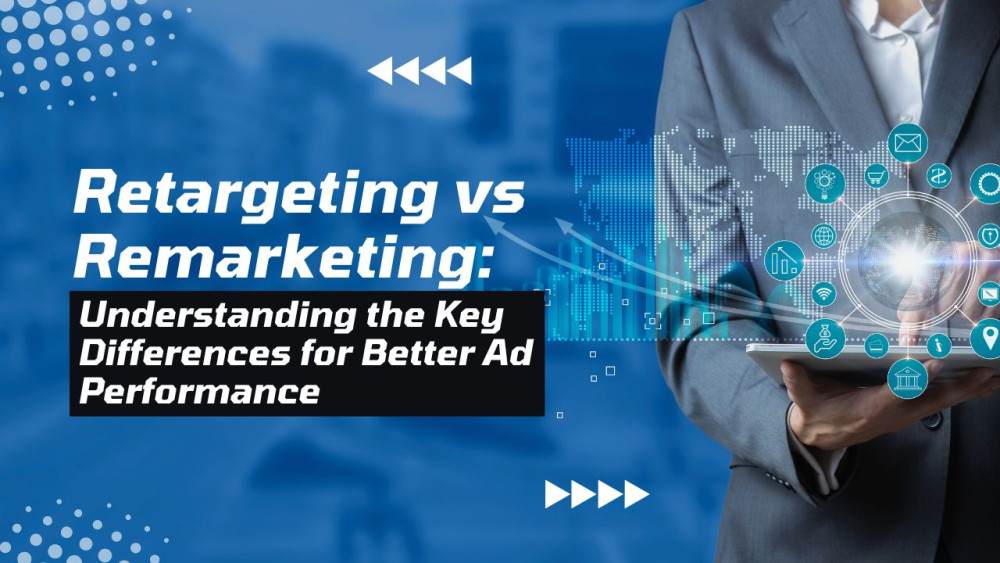In the fast-moving world of digital marketing, brands are always looking for ways to reconnect with people who have already shown interest in their products or services. Two of the most popular strategies to achieve this are retargeting and remarketing. While the terms are often used interchangeably, they are not the same. Understanding the difference between them can help you design more effective campaigns, improve conversion rates, and maximise your ad spend.
What is Retargeting?
Retargeting focuses on bringing back visitors who have interacted with your website, app, or other digital assets but didn’t complete a desired action — such as making a purchase or filling out a form. This is done primarily through paid online advertising.
For example, imagine you visit an online store and browse a pair of running shoes but leave without buying them. Later, while scrolling on social media or reading an article, you see an ad for the same shoes. That’s retargeting in action.
Key Features of Retargeting:
Uses tracking pixels or cookies to follow users online.
Delivers display ads, social media ads, or video ads to re-engage potential buyers.
Best for re-attracting website visitors and moving them further down the sales funnel.
What is Remarketing?
Remarketing is more about re-engaging existing customers or people in your contact list through direct communication channels, often email.
For example, if you have an e-commerce site and a customer leaves items in their shopping cart, you might send them an email reminder with a discount to encourage checkout. This is a classic remarketing tactic.
Key Features of Remarketing:
Often uses email campaigns, SMS marketing, or push notifications.
Works well for upselling, cross-selling, and customer retention.
Helps in building long-term loyalty and increasing lifetime customer value.
The Core Difference
In simple terms:
Retargeting = Paid ads to people who visited your site but didn’t convert.
Remarketing = Direct messaging to existing customers or leads to bring them back.
Think of retargeting as a billboard that follows your audience online, and remarketing as a personal note delivered to their inbox.
Why the Difference Matters for Ad Performance
Knowing whether you need retargeting or remarketing affects:
Budget allocation — Retargeting may require a larger ad spend, while remarketing can be more cost-effective if you already have a solid email list.
Ad creative — Retargeting ads should be visual and attention-grabbing; remarketing messages can be more personalised and detail-oriented.
Conversion strategy — Retargeting is great for first-time conversions; remarketing works better for repeat purchases and customer loyalty.
When to Use Retargeting
To recover lost visitors who didn’t convert.
To promote specific products or offers to people who showed interest.
To maintain brand visibility across social media and websites.
Example: A travel booking site shows ads for Paris vacation packages to users who searched for flights to France but didn’t book.
When to Use Remarketing
To bring back past customers for new offers.
To remind users of items in their cart.
To promote subscription renewals or membership upgrades.
Example: A streaming service sends an email to inactive subscribers with a free one-month trial to re-engage them.
The Role of Keyword Optimisation
While many marketers focus solely on targeting strategies, keyword optimisation plays a crucial role in boosting ad performance for both retargeting and remarketing.
For retargeting ads, well-optimised keywords ensure your ads appear in relevant placements and match the user’s browsing intent.
For remarketing emails, keyword-rich subject lines can improve open rates, while keywords in the email body can increase engagement and click-throughs.
This means that beyond targeting the right audience, you also need to target the right words — aligning them with your audience’s search habits and needs.
How Retargeting and Remarketing Work Together
The most effective campaigns don’t choose between the two — they use both. For example, you can retarget someone with ads after they visit your site, and then, if they subscribe to your newsletter, you can remarket to them via email later.
A powerful strategy could look like this:
Retarget website visitors with ads promoting a limited-time offer.
Encourage them to sign up for a newsletter or discount.
Remarket to the new subscribers with personalised product suggestions or loyalty rewards.
By combining both approaches, you create multiple touchpoints that guide your audience from awareness to conversion — and beyond.
Final Thoughts
Retargeting and remarketing are both essential tools in a digital marketer’s arsenal, but they serve different purposes. Retargeting helps you win back lost visitors, while remarketing nurtures and retains customers. Together, they can create a powerful cycle of engagement that keeps your brand top-of-mind and your conversions growing.
Whether you’re running PPC campaigns, crafting email marketing strategies, or optimising ad targeting, understanding the difference between these two approaches — and applying the right one at the right time — can significantly improve your ad performance and ROI.


